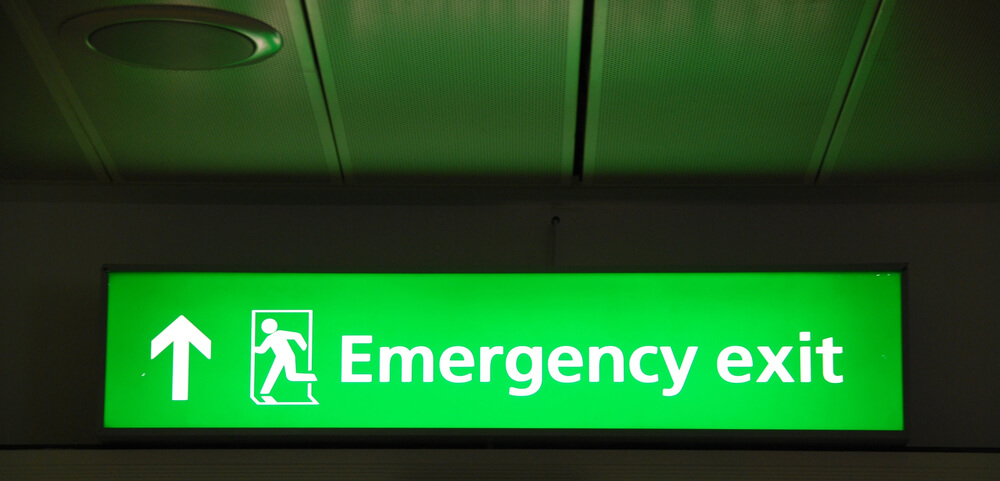 15
Oct
15
Oct
Essential Emergency Lighting Requirements Explained
- 0 Comment(s)
- October 15, 2024
Emergency lighting is an indispensable feature in buildings, designed to provide adequate illumination during power outages or emergencies. This system is essential in helping occupants safely exit a building when the regular lighting fails. Understanding the requirements for emergency lighting can prevent safety hazards and guarantee compliance with regulatory standards. Here, we comprehensively explain the most important aspects of emergency lighting.
General Purpose of Emergency Lighting
Emergency lighting plays a key role in bringing visibility during unexpected situations like power outages, natural disasters, or fire emergencies. A functioning emergency lighting system can prevent accidents and facilitate safe evacuation in buildings where the public or employees are present. Hospitals, offices, factories, and public buildings must have these systems to guide individuals to safety.
For both business owners and property managers, installing proper emergency lighting is not just about compliance; it’s about ensuring the safety of everyone inside the building. Non-compliance can result in penalties, fines, or worse—putting people’s lives in danger.
Legal and Regulatory Compliance
Several regulations dictate how emergency lighting systems must be designed and installed to guarantee effectiveness. In the U.S., the Occupational Safety and Health Administration (OSHA), the National Fire Protection Association (NFPA), and the National Electrical Code (NEC) are the governing bodies that outline these safety standards.
- NFPA 101: Known as the Life Safety Code, NFPA 101 focuses on minimum illumination levels required for emergency lighting. This makes sure that paths to exit points are adequately lit, allowing safe and orderly evacuations during emergencies. The code also specifies the locations where emergency lighting is mandatory.
- NFPA 70: The National Electrical Code sets the electrical safety standards for emergency lighting systems. It delivers guidelines on how these systems should be wired and maintained to avoid electrical hazards.
- OSHA Regulations: OSHA mandates that all buildings must have emergency lighting systems that give sufficient illumination for exit routes. This helps make sure that employees and visitors can easily navigate to the nearest exit in an emergency.
Failure to comply with these standards can result in legal consequences, including fines, potential shutdowns, and the safety risks it poses.
Illumination and Performance Standards
For emergency lighting to be effective, it must meet specific performance criteria. One of the primary requirements is illumination. The NFPA mandates that emergency lighting systems must bring a minimum of 1 foot-candle (fc) of illumination along egress paths. In areas such as stairways, higher illumination levels—up to 10 fc—may be required depending on the interpretation of the code.
Additionally, emergency lighting must activate automatically within seconds of a power failure and remain illuminated for at least 90 minutes. This duration means that people have enough time to evacuate safely, even during extended power outages. The lighting must be bright enough to allow visibility but not so bright that it causes confusion or disorientation during an evacuation.
Different Types of Emergency Lighting Systems
There are various types of emergency lighting systems, each serving different purposes depending on the building’s size and use. Understanding these types helps in selecting the most suitable system for your building’s needs.
- Non-Maintained Systems: In this type of system, the lights remain off during regular operation and only activate when there is a power failure. These are common in buildings that don’t require constant lighting and are mainly designed for emergency situations.
- Maintained Systems: These lights are always on, regardless of power status. They deliver continuous illumination and are often used in places where lighting must be available at all times, such as hospitals or areas with frequent foot traffic.
- Sustained Systems: A combination of both non-maintained and maintained systems, sustained emergency lighting features both always-on lamps and those that activate during a power outage. This setup provides an extra layer of security and visibility in large or complex spaces.
Power Sources for Emergency Lighting
Emergency lighting systems also vary based on their power sources. The two most common types are central battery systems and self-contained systems.
- Central Battery Systems: These systems supply power to multiple emergency lights from a single battery source. This setup is often used in larger installations, such as factories or shopping malls, where managing individual batteries would be cumbersome. Central battery systems are generally easier to maintain but require significant upfront investment.
- Self-Contained Systems: Each emergency light in this system has its own battery. This type of system is easier to install and is ideal for smaller buildings or areas where central battery systems may not be cost-effective. However, because each light has its own battery, maintenance can be more challenging as each unit needs to be tested and replaced individually.
Testing and Maintenance Guidelines
Maintaining emergency lighting systems is not just a legal obligation but also crucial for ensuring the safety of a building’s occupants. Regular testing is required to verify that all components are in working order and will activate as expected during an emergency.
- Monthly Tests: NFPA 101 requires that emergency lighting systems undergo monthly tests. During these tests, the lights should be activated for at least 30 seconds to help them switch on properly and bring adequate illumination.
- Annual Tests: In addition to monthly checks, an annual test is also required. This longer test, usually lasting for 1.5 hours, makes sure that the system can sustain power throughout an extended emergency. If any part of the system fails during these tests, it must be repaired or replaced immediately.
Emergency Lighting in Various Settings
Different types of buildings and facilities require unique emergency lighting solutions. For instance, hospitals and care homes must comply with higher standards due to the nature of their operations. In contrast, smaller businesses may have more straightforward needs, though compliance is still mandatory.
For large facilities such as factories, warehouses, or public buildings, emergency lighting must be strategically placed to cover wide areas and complex layouts. These facilities may also require more robust power systems to ensure continuous illumination.
Emergency services, such as fire departments, rely on clear and well-maintained emergency lighting systems when responding to emergencies. Having properly illuminated egress paths ensures that both occupants and emergency personnel can move efficiently through the building.
Consequences of Neglecting Emergency Lighting
Failing to maintain or install adequate emergency lighting can have serious consequences. Aside from the legal repercussions, a lack of proper lighting can lead to injury or even fatalities during an emergency. In a fire or other crisis, poorly lit exit routes may cause confusion, delay evacuation efforts, and result in panic.
Moreover, inadequate lighting can increase the liability of building owners. In many cases, insurance policies require strict adherence to safety codes, including installing and maintaining emergency lighting systems. Failing to comply may void insurance coverage, exposing property owners to significant financial risks.
At Yadkin Fire & Safety, we understand the importance of reliable emergency lighting. Our team is dedicated to helping you meet all regulatory requirements while ensuring the safety of your building’s occupants. We offer a range of emergency lighting products and emergency lighting maintenance services tailored to your facility’s needs, from small businesses to large industrial operations.
Our commitment to superior customer service, fast response times, and competitive pricing sets us apart. We don’t just provide products—we educate our clients to help them make informed decisions about their fire and safety needs. Additionally, our certifications with organizations like the NFPA, NCAFED, NAFED, ICC, and our DOT-certified cylinder retest facility are advantages that guarantee quality and compliance.

